June 2022 Plant Profile: Enkianthus campanulatus

Imagine you walk deep into a woodland in Japan, the Hokkaido region, and along a rocky creek side you see these small clouds of nodding bell-shaped flowers. Hues of pink, maybe yellow, some with striations of red (hence it’s English common name, red-veined enkianthus).
Read moreSelected Plants from the Pacific Connections New Zealand Garden
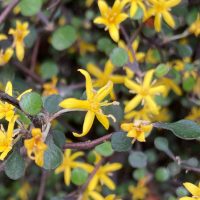
1) Corokia cotoneaster Wire-netting Bush
The common name of this species of Corokia aptly describes its wiry branches and tangled growth form. In late spring, small, fragrant yellow flowers are produced singly or in clusters up to four.
Several specimens of this and the following selections are currently in bloom throughout the Pacific Connections New Zealand Garden.
2) Phyllocladus alpinus Mountain toatoa
P.
Read moreSelected Plants from the Washington Park Arboretum
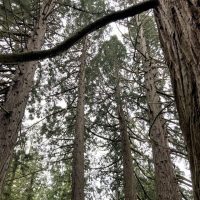
1) Sequoiadendron giganteum Sierra Redwood
These impressive trees are scattered around Seattle and West Seattle.
The grove on the western border of the Pinetum is worth a visit (located at: 101-48-K). Feel the “vibe”!
2) Platanus orientalis Oriental Plane
This is a excellent urban tree.
You’ve probably zoomed past a good example many times along the Lake Washington Boulevard (located at: 31-54-C).
Spring in the Woodland Garden 2022
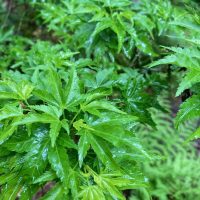
1) Bright Green Maples
Even the common color of green inspires hope and energy in spring. Here are two exceptional examples:
Acer palmatum ‘Shishigashira’, known as the Lion’s Mane maple, was so named for the curled, bunched up leaves at the ends of short, stout stems.
Acer japonicum ‘Ed Wood’, located in the Signature Bed at the Graham Visitor Center, sports exceptionally robust foliage for a blast of color in both the spring and autumn.
I’m Lichen What I’m Seeing!
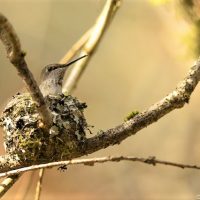
Let’s dip our toes into the bizarre world of lichens! Lichens are those interesting, colorful, strange little growths found on trees and stones that are commonly mistaken for moss. Lichens and mosses can certainly grow together and often do, but they are far from the same thing. These underappreciated epiphytes are actually not even plants at all. They are a symbiotic combination of fungi and algae which form an estimated 3,600 (and counting) different species of lichen throughout North America.
Read moreProtecting a Washington Rarity, the Endangered Desert Buckwheat
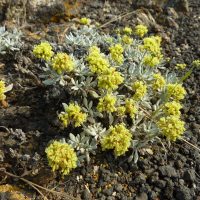
This excruciatingly rare plant has been documented in only one place: along a basalt ridgetop at the Hanford Reach National Monument.
Read moreApril 2022 Plant Profile: Field Horsetail: Weed or Wonder?

Horsetail, a plant that Seattle area gardeners love to hate. Have it in your garden? You have likely been fighting it for years. But this plant is more than just a weed. Field horsetail, Equisetum arvense, is a tenacious perennial native to the temperate and arctic regions across the northern hemisphere, including the Pacific Northwest.
In early spring I often encounter visitors wondering about the otherworldly-looking reproductive stems of field horsetail.
Fantastical Fronds and Where to Find Them
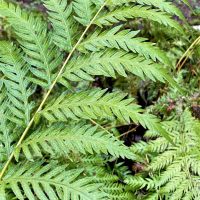
Ferns are unique in that they do not flower or produce seeds, but instead reproduce vegetatively or through spores. If you’ve ever seen dark brown dots on the bottom of a fern frond – those are spores! Spores are most often found on the underside of fronds in clusters called sori.
1) Woodwardia fimbriata Giant Chain Fern
This species is the largest fern native to North America and is found on the coast in moist coniferous forests from British Columbia to Baja California.
Read moreSpotlight on Bothell BES 495 Student Interns: Jessica Rouhana and Jit Singh Roopra
University of Washington Bothell (UWB) and the University of Washington Botanic Gardens (UWBG) at the Washington Park Arboretum (WPA) partnered this Winter quarter with two community based learning and research BES 495 student interns. Here are their BES 495 project blogs:
Planting Projects at WPA by Jessica Rouhana, BS in Conservation and Restoration Science
Two projects were focused on: Rhododendron Glen and the Lightning Tree.
Living Fossils at the Washington Park Arboretum
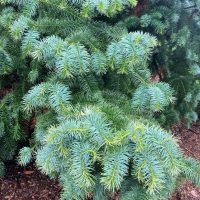
The term ‘living fossil’ was coined by Charles Darwin in his book, Origin of Species in 1859. Although definitions can vary, a living fossil generally refers to an organism that has remained in the fossil record for an unusually long time span with seemingly very little change. These organisms are fascinating case studies in plant evolution. Here are some of the living fossil plants that can be found in the Arboretum:
1) Taiwania cryptomerioides Coffin Tree
This coniferous tree species is native to eastern Asia and is the only surviving member of its genus, descending from the middle Jurassic Period.
Read more